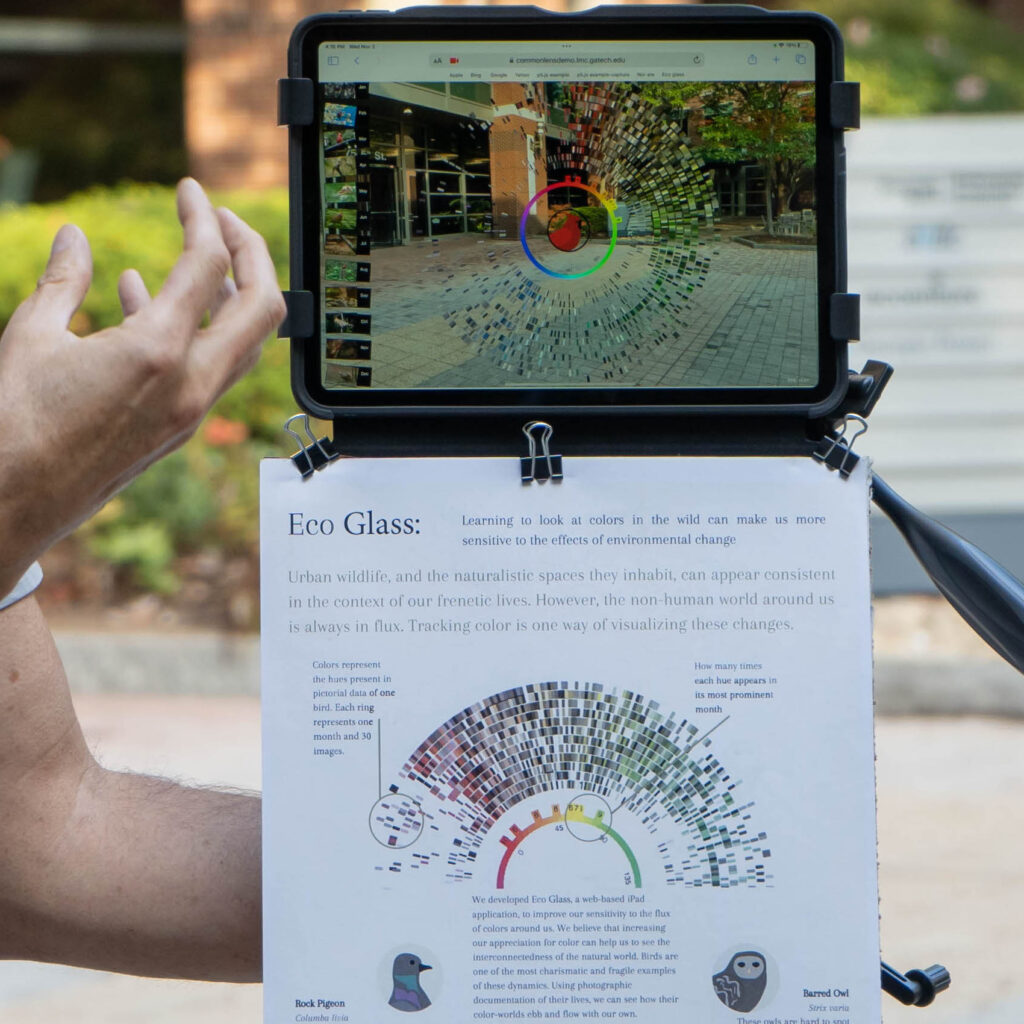Pigeon Glass: An augmented-reality inquiry into the color data of eBird
by Yanni Loukissas, Emily Weigel, Michael Zhou, and Shruti Vedula
Pigeon Glass is an augmented-reality data visualization developed for the Apple iPad, which uses color data extracted from photos in eBird: a collective database of over 100 million bird sightings (images). The application, written in p5.js (a JavaScript library) works like an interactive applique, layered over the live video feed of the iPad’s built-in camera.
This is work that I have undertaken with a small, interdisciplinary team of faculty and students (Shruti Vedula, Emily Weigel, and Michael Zhou) drawn together by a shared interest in exploring the educational potential of creating local, augmented-reality data visualization projects, as an alternative to the use of generic platforms, such as “Google Glass.” We have found that creating and using local lenses to explore the environment can help students think critically about more-than-human relationships.
For Pigeon Glass, we leveraged abundant photographic documentation on local birds—rock pigeons, brown thrashers, northern cardinals, red-tailed hawks, among others—to help students understand the more-than-human significance of color on our campus. For example, Pigeon Glass helped students see how environmental changes due to both global climate shifts and local development projects can make life difficult for birds that rely on color to hide from predators or to be noticed by potential mates. The paper draws on a situated analysis conducted for two educational workshops. Our findings reveal the strengths and limitations of Pigeon Glass, as well as the broader significance of creating augmented-reality data projects in the context of STS education about more-than-human relationships.
